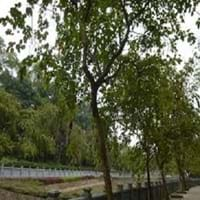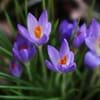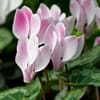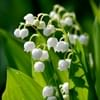Life Span
Perennial
Biennial
Type
Bulb, Flowering Plants
Tree
Origin
Aegean Islands, Central Asia, Middle East, North Africa, Southern Europe, Western China
South-Eastern Asia, Southeastern Asia, China
Types
Crocus abantensis, Crocus adanensis, Crocus biflorus, Crocus chrysanthus, Crocus korolkowii
Purple Orchid Tree, White Orchid Tree, Bidi leaf tree
Number of Varieties
Not Available
Habitat
Scrubs, Woods
Forests, Mountain Slopes, Valley
USDA Hardiness Zone
3-8
9-13
Sunset Zone
1a, 1b, 2a, 2b, 3a, 3b, 4, 5, 6, 7, 8, 9, 10, 11, 12, 13, 14, 15, 16, 17, 18, 19, 20, 21, 22, 23, 24
H1, H2, 9, 10, 11, 13, 18, 19, 20, 21, 22, 23
Habit
Clump-Forming
Upright/Erect
Minimum Height
Not Available
Flower Color
Blue, Orange, Pink, Purple, White, Yellow
Light Pink, Magenta, Violet
Flower Color Modifier
Not Available
Bicolor
Fruit Color
Not Available
Green, Sandy Brown
Leaf Color in Spring
Green
Green, Gray Green
Leaf Color in Summer
Not Available
Green, Gray Green
Leaf Color in Fall
Green
Green, Gray Green, Yellow green
Leaf Color in Winter
Green
Green, Gray Green, Yellow green
Leaf Shape
Grass like
Butterfly shaped
Plant Season
Spring, Winter
Spring, Summer
Sunlight
Full Sun, Part sun
Full Sun, Partial Sun
Type of Soil
Loamy
Clay, Loam, Sand
The pH of Soil
Neutral, Slightly Acidic
Acidic, Neutral
Soil Drainage
Well drained
Well drained
Bloom Time
Spring, Winter
Early Spring, Spring
Tolerances
Drought
Drought
Where to Plant?
Container, Ground, Pot
Ground
How to Plant?
From bulbs, Grafting, Seedlings
Budding, Grafting, Seedlings
Plant Maintenance
Medium
Medium
Watering Requirements
Form a Soil ring to water efficiently, Water Deeply, Water twice a day in the initial period, Water when soil is dry
Average Water Needs, Keep the ground moist but not water-logged, Water Deeply
In Summer
Lots of watering
Lots of watering
In Spring
Moderate
Moderate
In Winter
Average Water
Average Water
Soil pH
Neutral, Slightly Acidic
Acidic, Neutral
Soil Type
Loamy
Clay, Loam, Sand
Soil Drainage Capacity
Well drained
Well drained
Sun Exposure
Full Sun, Part sun
Full Sun, Partial Sun
Pruning
No pruning needed in the early stages, Prune to stimulate growth, Remove dead or diseased plant parts, Requires little pruning
Remove branches, Remove damaged leaves, Remove dead branches, Remove dead leaves, Remove dead or diseased plant parts
Fertilizers
All-Purpose Liquid Fertilizer
Apply N-P-K
Pests and Diseases
Aphids, Botrytis Blight, Mushroom root rot, Narcissus Basal Rot, Narcissus Bulb Fly, Slugs, Snails, Tulip Fire, Tulip Viruses
Red blotch
Plant Tolerance
Drought
Drought
Flower Petal Number
Single
Single
Foliage Texture
Fine
Medium
Foliage Sheen
Glossy
Matte
Attracts
Not Available
Birds
Allergy
Not Available
Not Available
Aesthetic Uses
Not Used For Aesthetic Purpose
Not Used For Aesthetic Purpose
Beauty Benefits
Not Available
Not Available
Environmental Uses
Air purification
Air purification, Nesting sites for birds, Shadow Tree
Medicinal Uses
Arthritis, Gout
Carminative, Laxative
Part of Plant Used
Whole plant
Buds, Flowers, Leaves, Root, Seeds, Stem
Other Uses
Not Available
Fibre, Gum, Used as a dye
Used As Indoor Plant
No
No
Used As Outdoor Plant
Yes
Yes
Garden Design
Not Available
Feature Plant, Shade Trees, Street Trees, Tropical
Botanical Name
Crocus Longiflorus
BAUHINIA purpurea
Common Name
Crocus
Butterfly Tree, Orchid Tree
In Hindi
Crocus
Butterfly tree
In German
Krokus
Schmetterlings- Baum
In French
Crocus
arbre de papillon
In Spanish
Azafrán
árbol de la mariposa
In Greek
κρόκος
δέντρο πεταλούδα
In Portuguese
Açafrão
árvore borboleta
In Polish
Krokus
drzewo Butterfly
In Latin
Erocum
Gloria ligno
Phylum
Magnoliophyta
Magnoliophyta
Class
Liliopsida
Magnoliopsida
Order
Asparagales
Fabales
Family
Iridaceae
Fabaceae
Clade
Angiosperms, Monocots
Angiosperms, Eudicots, Rosids
Tribe
Not Available
Cercideae
Subfamily
Crocoideae
Caesalpinioideae
Season and Care of Crocus and Butterfly Tree
Season and care of Crocus and Butterfly Tree is important to know. While considering everything about Crocus and Butterfly Tree Care, growing season is an essential factor. Crocus season is Spring and Winter and Butterfly Tree season is Spring and Winter. The type of soil for Crocus is Loamy and for Butterfly Tree is Clay, Loam, Sand while the PH of soil for Crocus is Neutral, Slightly Acidic and for Butterfly Tree is Acidic, Neutral.
Crocus and Butterfly Tree Physical Information
Crocus and Butterfly Tree physical information is very important for comparison. Crocus height is Not Available and width 5.10 cm whereas Butterfly Tree height is 760.00 cm and width 17.80 cm. The color specification of Crocus and Butterfly Tree are as follows:
Crocus flower color: Blue, Orange, Pink, Purple, White and Yellow
Crocus leaf color: Green
Butterfly Tree flower color: Light Pink, Magenta and Violet
- Butterfly Tree leaf color: Green and Gray Green
Care of Crocus and Butterfly Tree
Care of Crocus and Butterfly Tree include pruning, fertilizers, watering etc. Crocus pruning is done No pruning needed in the early stages, Prune to stimulate growth, Remove dead or diseased plant parts and Requires little pruning and Butterfly Tree pruning is done Remove branches, Remove damaged leaves, Remove dead branches, Remove dead leaves and Remove dead or diseased plant parts. In summer Crocus needs Lots of watering and in winter, it needs Average Water. Whereas, in summer Butterfly Tree needs Lots of watering and in winter, it needs Average Water.





